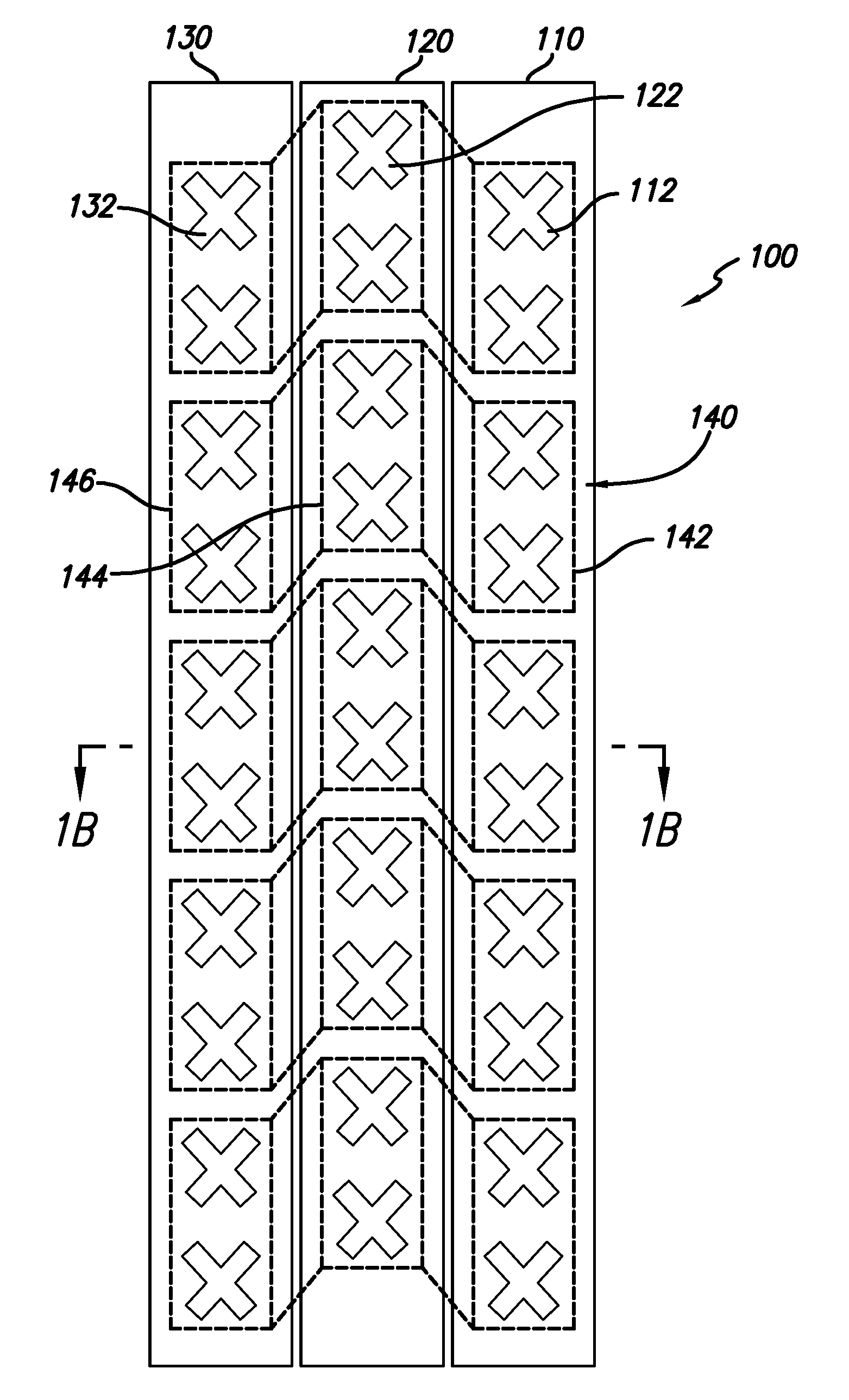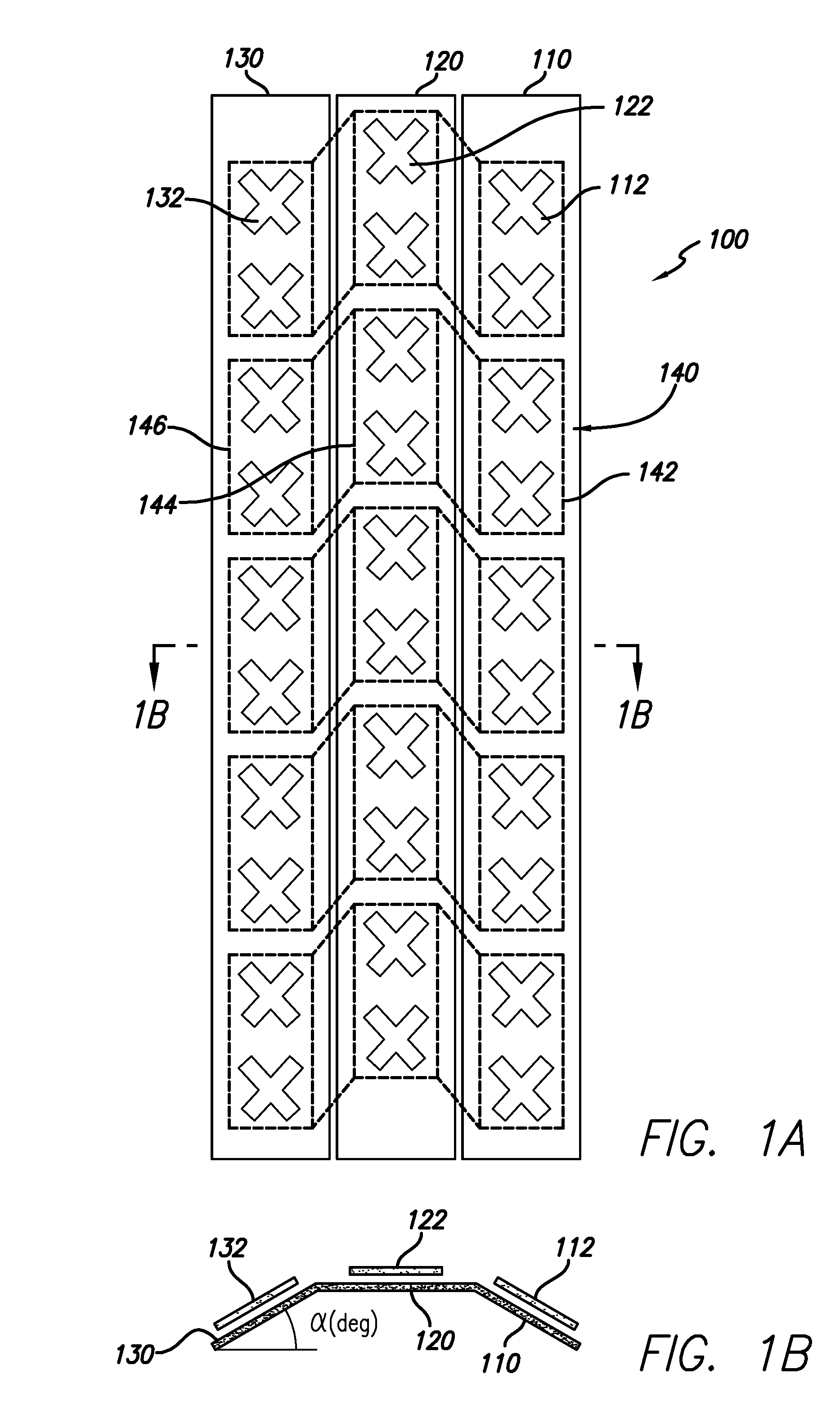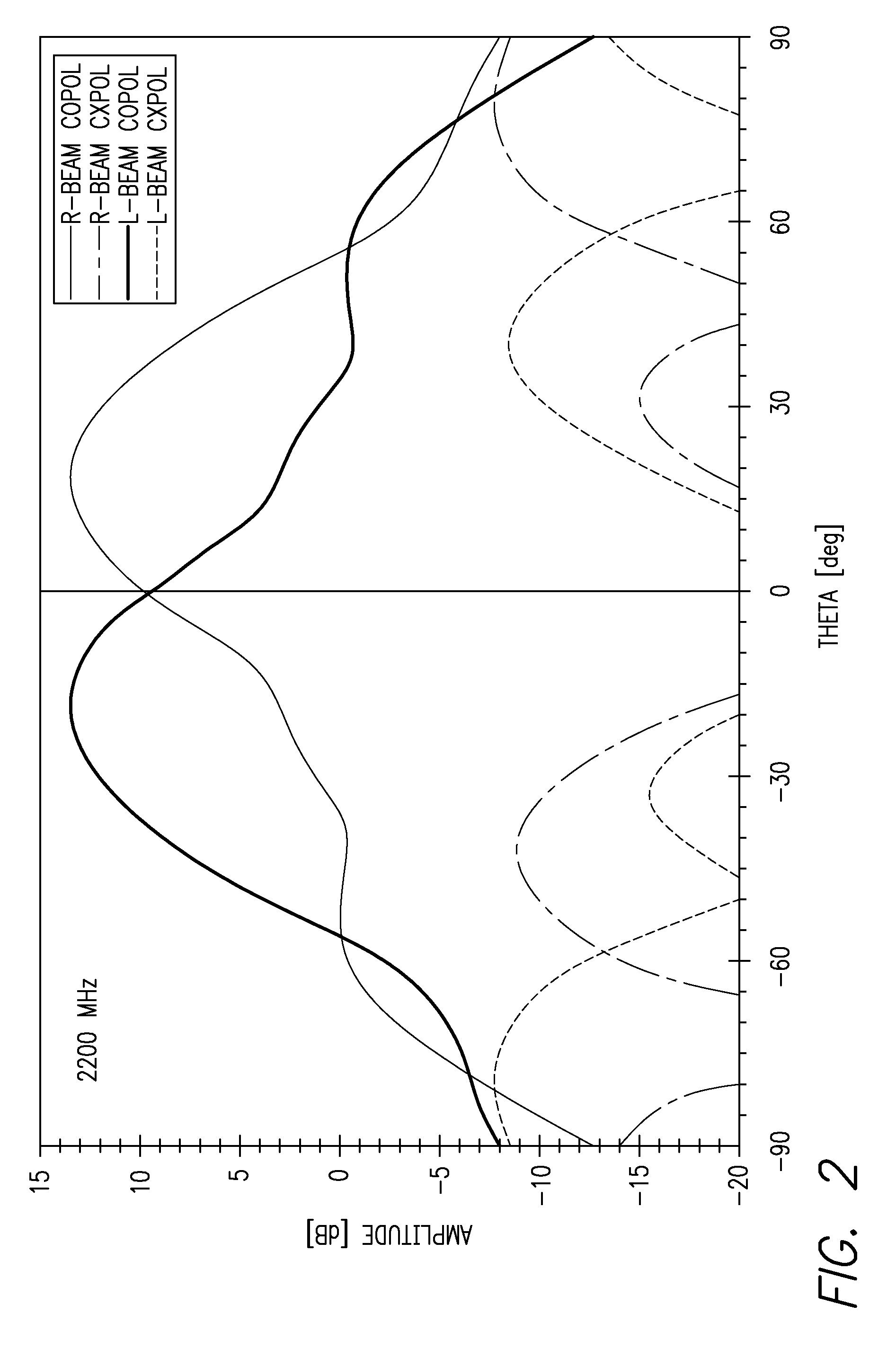Dual beam sector antenna array with low loss beam forming network
a beam forming network and dual beam technology, applied in antenna arrays, antennas, electrical equipment, etc., can solve the problems of increasing the difficulty of providing the desired antenna performance, increasing the cost of such applications, and affecting the weight and size of antennas
- Summary
- Abstract
- Description
- Claims
- Application Information
AI Technical Summary
Benefits of technology
Problems solved by technology
Method used
Image
Examples
Embodiment Construction
[0022]FIGS. 1A and 1B show the structure of a preferred implementation of a dual beam sector antenna array 100 in accordance with the invention. As shown in FIG. 1A, radiators 112, 122 and 132 are mounted on three separate planar reflector panels 110, 120, 130 to form a non-planar three-column antenna array. For example the radiators 112, 122 and 132 may be aperture slot coupled patch antenna elements as generally shown. Other radiators may also be employed such as planar dipole, etc. as well known in the art. The relative slope of the two edge columns, α, with respect to the center column, shown in FIG. 1B, is important in achieving the required pattern shapes and minimum cross-over and beam-split losses. Typically, a preferred range for this angle is between 20 deg to 30 deg with respect to the center column panel 120. A beam forming network described below creates dual beam radiation patterns from the three column radiator structure. The dual beam patterns can be maintained over ...
PUM
 Login to View More
Login to View More Abstract
Description
Claims
Application Information
 Login to View More
Login to View More - R&D
- Intellectual Property
- Life Sciences
- Materials
- Tech Scout
- Unparalleled Data Quality
- Higher Quality Content
- 60% Fewer Hallucinations
Browse by: Latest US Patents, China's latest patents, Technical Efficacy Thesaurus, Application Domain, Technology Topic, Popular Technical Reports.
© 2025 PatSnap. All rights reserved.Legal|Privacy policy|Modern Slavery Act Transparency Statement|Sitemap|About US| Contact US: help@patsnap.com



